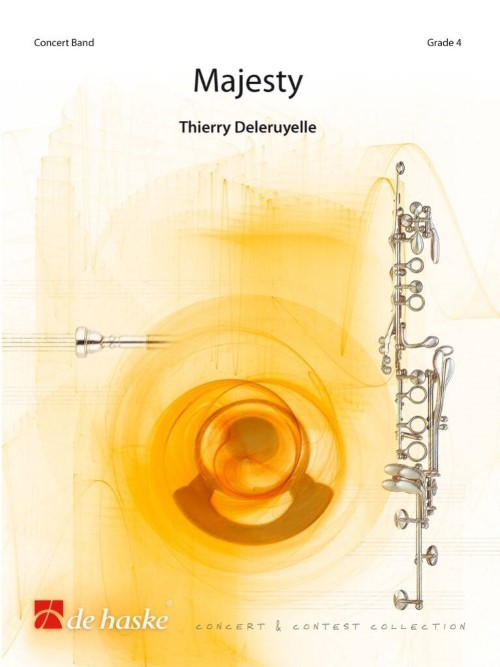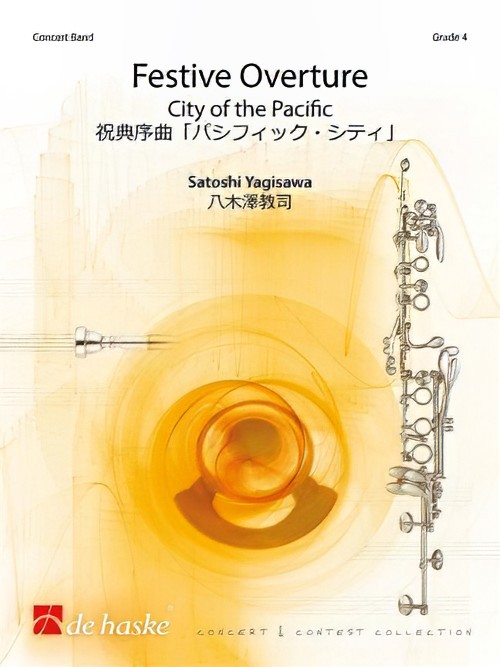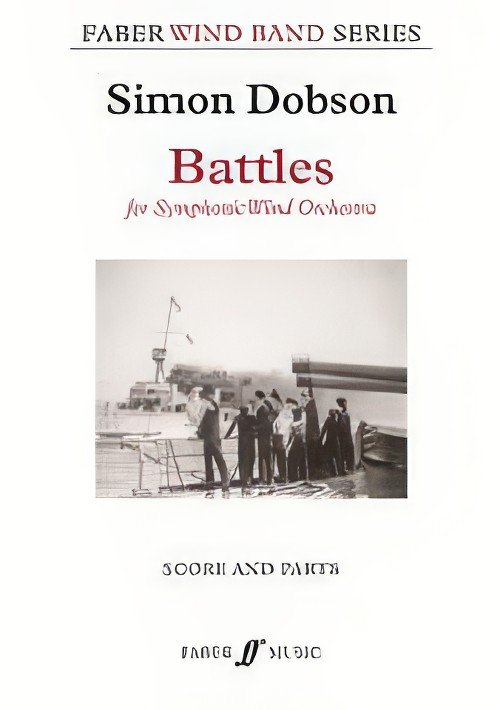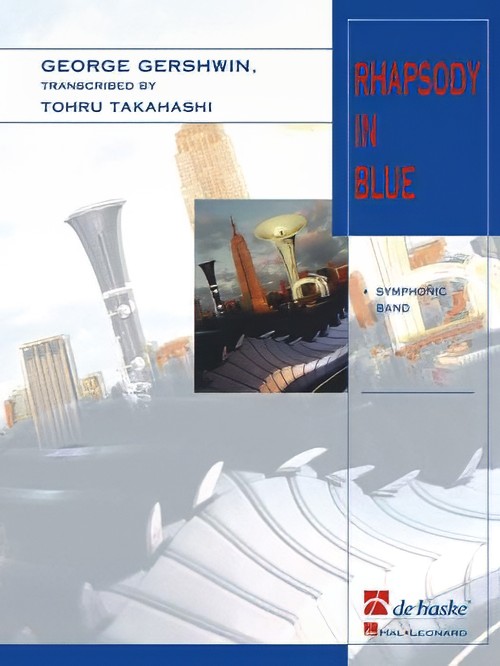Results
-
 £53.50
£53.50Four Pictures - Árpád Balázs
The teachers under whom rpd Balzs (b.1937) studied composition - Ferenc Farkas, Aram Khachaturian and Goffredo Petrassi - each independently formed the opinion that with his lyrical gift rpd Balzs's true creative field would be that of choral music and wind ensembles. Their early predictions are borne out by the roughly two hundred and fifty works for choir and almost twenty for wind orchestra that the composer has since produced. It is interesting that in the suite entitled Ngy kp (Four pictures) the stylistic features of these two related musical fields are united. In it the wind instruments sing! It was not by chance that the expansive second movement was given the title Cantilena, while the slightly livelier but just as lyrical third movement was entitled Arietta. The opening movement of the work is a stridently jolly, energetic Indul (March), but not one of the rigidly military kind: the 6/8 rhythm contributes to its light-hearted character. This music is avowedly akin to the ballet music of Prokofiev. This choice series of four character pieces is crowned by Jtk (Play) in which conveying the effect of the mixture of lines moving in parallel and then colliding with each other may be more technically demanding, but is well worth the effort! (Hungaroton HCD 31353)
Estimated dispatch 7-14 working days
-
 £94.99
£94.99Majesty (Concert Band - Score and Parts) - Deleruyelle, Thierry
Majesty is a powerful and spectacular overture. Right from the start, the brass open the work brilliantly before making way for a majestic hymn mostly played by the woodwind. The end of the piece repeats the opening fanfare as a monumental finale in the style of an American symphonic march. This work was commissioned by the Bourbourg Wind Orchestra (France), conducted by Claude Deconinck, on the occasion of its 230th anniversary. This piece was premiered by the commissioning orchestra on 19 November 2022, just two months after the death of Queen Elizabeth II. Naturally, this work is dedicated to her.Duration: 6.15
Estimated dispatch 7-14 working days
-
 £104.99
£104.99Festive Overture (Concert Band - Score and Parts) - Yagisawa, Satoshi
This work was commissioned by the civilian wind orchestra Shimizu il compagno, based in Shimizu City, Shizuoka Prefecture, Japan, as a commemorative work for their 10th Anniversary. The world premiere was performed by the ensemble, conducted by Hiromichi Hamada in 2017. Having held discussions with the head of the orchestra, Tomohiro Tsuji, and members of the group, Satoshi Yagisawa settled on a central motif for this commemorative work: fellow, or companion, in the sense of the Italian il compagno, which features in the orchestra's name. The work also strives to describe the characteristic friendliness of Shimizu city, a place known for its warmth and kindness which is visible from both Mount Fuji and the sea. The composition is written in Yagisawa's typical dramatic style with an atmosphere of scintillating light and lyrical warmth, making it an excellent choice for opening a concert.Duration: 5.15
Estimated dispatch 7-14 working days
-
 £100.00
£100.00Battles (Concert Band - Score and Parts) - Dobson, Simon
Battles was written for the restoration of the epic 1927 silent film The Battles of Coronel and Falkland Islands, and was commissioned by the British Film Institute (BFI) in 2013. The work presents eight contrasting scenes as a continuous sequence: War, Introduction of Admiral von Spee, German Banquet, Building Steam/Preparing, Islanders, Call to Arms, Great Battle at Sea and Victory. The original score was written for a small chamber orchestra, symphonic brass and a substantial batterie of tuned and untuned percussion. Battles has been edited for symphonic wind orchestra with percussion and harp. Composer Simon Dobson says of his colourful score, "I wanted to keep things simple and clear, so there is a British theme, a fanfare march idea, often heard on trumpet, and a German naval theme, which is a more angular motif." Duration: 13.00
Estimated dispatch 7-14 working days
-
 £289.99
£289.99Rhapsody in Blue (Piano Feature with Concert Band - Score and Parts) - Gershwin, George - Takahashi, Tohru
George Gershwin's music combines musical styles heard in the United States at the beginning of this century such as jazz and blues, with aspects of European classical music. Gershwin's breakthrough came in 1924 with Rhapsody in Blue. Following several versions of this piece Gershwin made what is probably the best known arrangement - for piano and symphony orchestra. Takahashi has created a further new and exciting version for wind orchestra.Duration: 17:30
Estimated dispatch 7-14 working days
-
 £94.99
£94.99Majesty - Thierry Deleruyelle
Majesty is a powerful and spectacular overture. Right from the start, the brass open the work brilliantly before making way for a majestic hymn mostly played by the woodwind. The end of the piece repeats the opening fanfare as a monumental finale in the style of an American symphonic march. This work was commissioned by the Bourbourg Wind Orchestra (France), conducted by Claude Deconinck, on the occasion of its 230th anniversary. This piece was premiered by the commissioning orchestra on 19 November 2022, just two months after the death of Queen Elizabeth II. Naturally, this work is dedicated to her.
Estimated dispatch 7-14 working days
-
 £105.00
£105.00Battles - Simon Dobson
Battles was written for the restoration of the epic 1927 silent film The Battles of Coronel and Falkland Islands, and was commissioned by the British Film Institute (BFI) in 2013. The work presents eight contrasting scenes as a continuous sequence: War, Introduction of Admiral von Spee, German Banquet, Building Steam/Preparing, Islanders, Call to Arms, Great Battle at Sea and Victory. The original score was written for a small chamber orchestra, symphonic brass and a substantial batterie of tuned and untuned percussion. Battles has been edited for symphonic wind orchestra with percussion and harp.Composer Simon Dobson says of hiscolourful score, "I wanted to keep things simple and clear, so there is a British theme, a fanfare march idea, often heard on trumpet, and a German naval theme, which is a more angular motif."
Estimated dispatch 7-14 working days
-
£134.99
Adagio For Horn - Boudewijn Cox
Adagio is a short but intense piece for wind orchestra and horn. The uncomplicated accompaniment allows any orchestra to perform this excellent piece created by Boudewijn Cox. This beauty was specially written for the famous Belgian horn-player Ivo Hadermann.
Estimated dispatch 7-14 working days
-
 £248.99
£248.99Volcano - Jan van der Roost
Volcano is a work commissioned by the Municipal Wind Orchestra of Endingen in Germany. The three creative impulses which provided the basis for this symphonic poem are inspired by outside sources. They are closed linked with the history of the Orchestra and the region in which it performs. In this region is the Kaiserstuhl, an enormous rock situated on the edge of the Black Forest. Volcano is a stimulating, lyrical, brilliant and festive work.
Estimated dispatch 7-14 working days
-
 £76.99
£76.99Autumn Soliloquy - James Barnes
A delightful tone poem composed as an oboe solo with wind orchestra accompaniment and dedicated to Susan Hicks Brashier. Later versions for solo clarinet and flute, and orchestra accompaniments followed. Each solo instrument with piano accompaniment is also available for recitals and contest. Grade 3.
Estimated dispatch 7-14 working days
